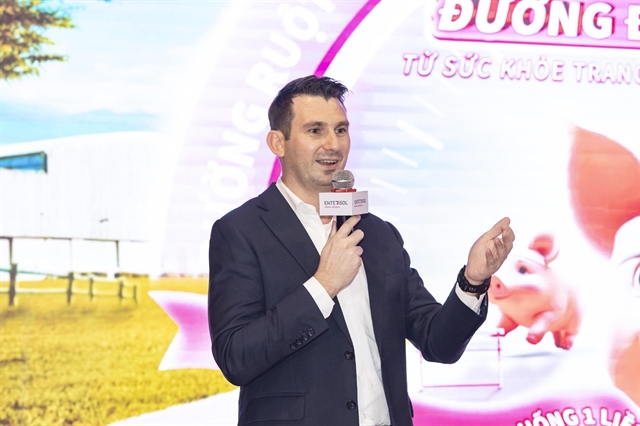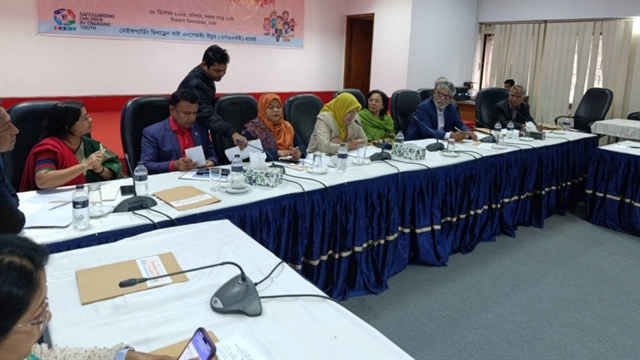 Opinion
Opinion

" />Mai Văn Trịnh, Director General of the Việt Nam Institute for Agricultural Environment, tells the Nông thôn Việt Nam (Việt Nam Rural) Newspaper that the soil in the Red Delta is fast losing its nutrients, and is severely polluted in many areas.
 |
Mai Văn Trịnh, Director General of the Việt Nam Institute for Agricultural Environment, tells the Nông thôn Việt Nam (Việt Nam Rural) Newspaper that the soil in the Red Delta is fast losing its nutrients, and is severely polluted in many areas.
What is the situation regarding arable land in Việt Nam?
Most agriculture soil in Việt Nam used to be in good condition and suitable for many types of crops. Especially in the north region, soil in the Red River delta had a high level of nutrients and alluvium, making it almost perfect for agriculture production.
However, due to many impacts, agriculture soil in both the Red River Delta and in the midlands of the north have been degraded. Land erosion in mountainous areas caused by over-cropping and lack of proper care has become serious.
Besides, the existence of heavy metals like iron and aluminum in the soil is causing the erosion of nutrients in the soil.
More seriously, a large part of agriculture soil in the Red River delta is badly polluted by waste discharge from urban areas, factories and industrial parks. The recovery of such land is going to be extremely hard, thus agriculture production in these areas would be badly affected.
Which are the most polluted areas?
Most of the land located near craft villages, factories and industrial parks and urban areas are heavily polluted. For instance, take the land near craft villages that do metallisation work in Bắc Ninh Province, or the suburban areas around Hà Nội like Thanh Trì, Thường Tín and Quốc Oai districts.
A large area of land along the banks of the Tô Lịch, Nhuệ and Đáy rivers is also polluted. The pollution along Nhuệ River is especially serious because it runs through garment, dyeing and battery factories and craft villages, where waste water is discharged directly to the river without being treated. Research has shown that no marine creatures can survive in this river. On the other hand, the river is an important irrigation source for many provinces.
How exactly does the polluted river impact agriculture production?
In the short term, the impact can be unclear. In fact, crops could grow even better thanks to organic pollution in the river water, which comes from organic waste from slaughterhouse and craft villages making food products.
However, organic pollutants are not as dangerous as inorganic pollutants like heavy metals. Heavy metals can be buried in the soil for years and contaminate crops. If the pollution level is high, consuming the crop can cause food poisoning, not to mention long term sicknesses like cancer.
What is the alternative for agriculture production, or how can we recover the soil that has been polluted?
Once the soil is polluted with chemicals or heavy metals, it can’t be recovered. The best thing we can do is to have tight control over waste discharge and waste treatment.
Soil pollution can be caused by pesticides or fertilisers, too, but the most dangerous element is waste discharge from urban areas and industrial areas. A hundred years of pollution from agriculture production would not be as serious as pollution from industrial production of one day. The natural resource and environment management unit should be responsible for this.
The management of river systems that play important role in agriculture production must be very, very tight. Basically, all waste, without exception, has to be treated before being discharged. However, the supervision of such operations is verhy loose and ineffective.
In many countries, authorities have tight control right from the very beginning – factories can only discharge wastewater once they are treated and if the treated wastewater meets certain standards. We haven’t been able to do this in Việt Nam.
The larger picture is that very tight control over waste treatment would not only protect agriculture land, but society as a whole. For the agriculture sector alone, there is an urgent need to have an evaluation programme on the vulnerability caused by soil pollution. And we also need to have strong measures to protect arable land in the long run.--VNS




